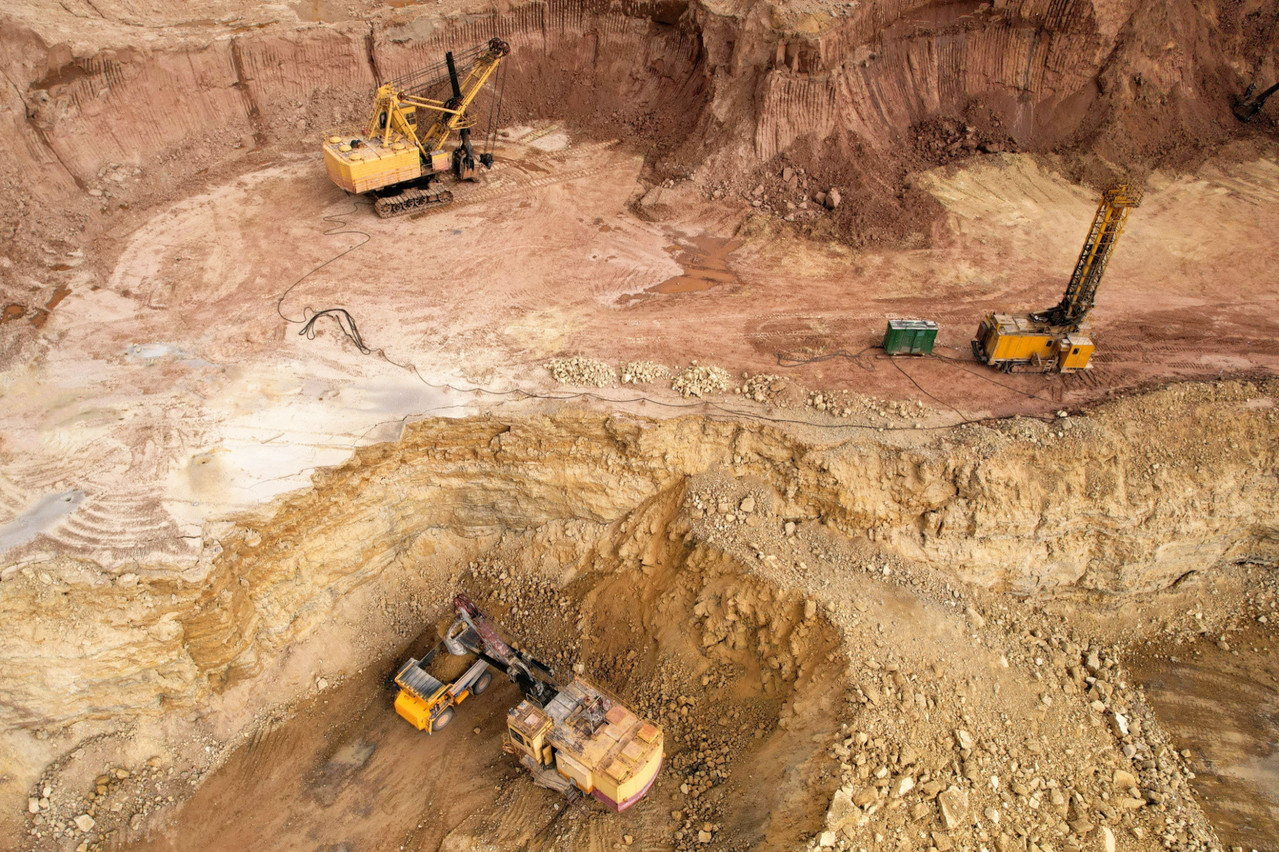“Exploitation of the subsoil is no longer in fashion,” said Robert Colbach, a geologist and senior researcher at the state geological survey. “Luxembourg has forgotten its mining past,” he lamented. A mining past that almost disappeared with the end of mining in the 1980s, which represented almost the entire sector.
But could the country have reinvented itself by exploiting other mineral resources? At a time when the energy and digital transition requires large quantities of rare metals and minerals, the country lacks them. Apart from iron ore, “Luxembourg is not rich in mineral resources,” confirmed Colbach, who even specified that “the Luxembourg subsoil has no rare metals and minerals at all.”
In the past, lead and copper mines existed, but the last ones closed down in the post-war period. There was also a deposit of antimony--a mineral considered rare--near Goesdorf, but the mine closed in 1938 and the vein “is probably not huge,” explained the geologist. “There’s no reason to think that mining could be profitable.”
The number of quarries is decreasing
However, there is another resource in the area, and in quantity, that of building materials: sandstone, dolomite, slate, gypsum, gravel or sand. But this geological availability has not paved the way for increased exploitation. On the contrary, the number of quarries has fallen from several hundred in the past to only eleven in the country.
This poses a problem in a country where there is a lot of new construction. “Today, we are unable to meet the national demand for construction materials,” said Colbach. This phenomenon has been exacerbated by the end of the blast furnaces, which threw slag into the slag heap, which in turn was used for construction purposes.
This created a gap in national production, which was not compensated by the opening of new quarries. However, according to the geologist, attempts have been made to open new quarries in Luxembourg. But for decades, this has not led to any opening, he deplored. The reason, he said, is the environmental constraints imposed by the administration of the ministry of the environment.
Heavy environmental constraints
“Nature is important,” he conceded. But the demand for materials leads to imports from abroad, sometimes over long distances. “The polluting emissions caused by transport are not negligible, perhaps greater than those that would be caused by the quarries,” he said.
One of the main players in the sector, Carrières Feidt, recognises that in this day and age it is “very, very difficult” to obtain authorisation to open a new quarry. Environmental constraints are, of course, the main reason, even if the company assures a "very good contact with the environment [ministry]" and that it is not a question of “ill will” on the part of the administration.
There are many other constraints, according to him, including one in particular: the acquisition of land covering a potential quarry. In Luxembourg, the land is very expensive. “If you have fifty owners on a potential quarry, the operation is null and void from the start.”
Limited recycling
It is therefore much easier at present to extend existing quarries than to open new ones, according to Carrières Feidt. “We have quite substantial extension projects on track, and we will obtain the necessary permits,” the quarryman said.
Recycling remains another modern solution for supplying materials, but it has its limits. “The possibilities of recycling these materials are limited to 30%, the rest comes from the quarries,” assessed Colbach. Carrières Feidt also recognises that recycling is a solution “up to a certain point,” which cannot provide “the quantities necessary to meet the demand in Luxembourg.”
Space mining, a “nonsense”
That leaves the exploitation of space resources, presented by some as the future of the sector. Luxembourg has in the past positioned itself . A “nonsense,” according to Colbach. “We have this on Earth, in the first 300 metres of depth,” explained the geologist. “Mining is much easier and, from an economic point of view, much cheaper on Earth than on the moon or asteroids,” he smiled.
So it’s a matter of refocusing on what’s available nearby, according to the geologist. “The government has put the brakes on so much that applications have been abandoned,” he explained. Hence the need “for Luxembourg to do what it can for building materials.”
This story was first published in French on . It has been translated and edited for Delano.
